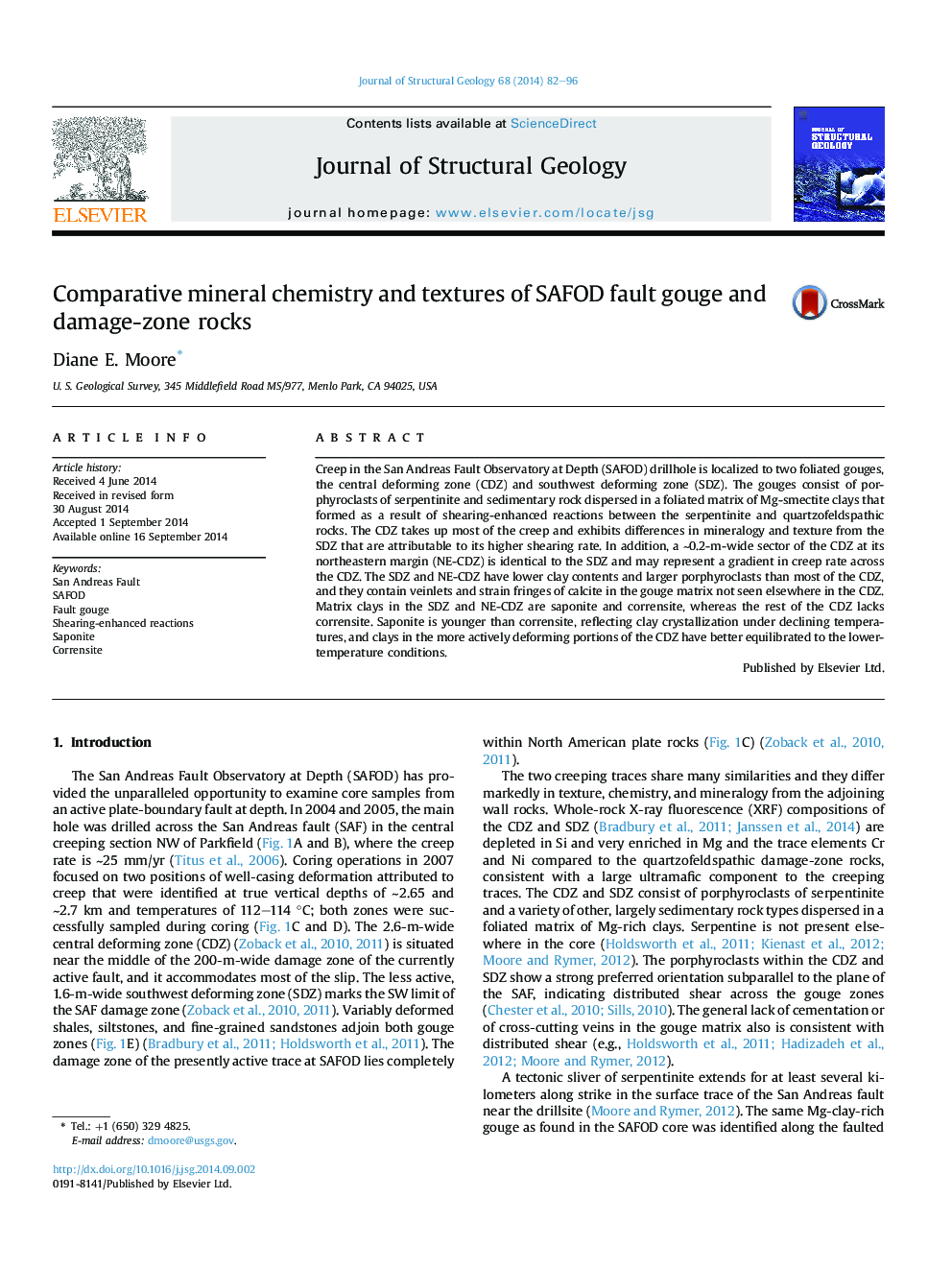| Article ID | Journal | Published Year | Pages | File Type |
|---|---|---|---|---|
| 4733075 | Journal of Structural Geology | 2014 | 15 Pages |
•The two creeping traces in SAFOD show some differences in texture and mineralogy.•These differences are attributable to their different shearing rates.•Variations across the width of the CDZ represent a gradient in creep rate.•Mg-clay distributions in the creeping traces are functions of shearing rate and T.
Creep in the San Andreas Fault Observatory at Depth (SAFOD) drillhole is localized to two foliated gouges, the central deforming zone (CDZ) and southwest deforming zone (SDZ). The gouges consist of porphyroclasts of serpentinite and sedimentary rock dispersed in a foliated matrix of Mg-smectite clays that formed as a result of shearing-enhanced reactions between the serpentinite and quartzofeldspathic rocks. The CDZ takes up most of the creep and exhibits differences in mineralogy and texture from the SDZ that are attributable to its higher shearing rate. In addition, a ∼0.2-m-wide sector of the CDZ at its northeastern margin (NE-CDZ) is identical to the SDZ and may represent a gradient in creep rate across the CDZ. The SDZ and NE-CDZ have lower clay contents and larger porphyroclasts than most of the CDZ, and they contain veinlets and strain fringes of calcite in the gouge matrix not seen elsewhere in the CDZ. Matrix clays in the SDZ and NE-CDZ are saponite and corrensite, whereas the rest of the CDZ lacks corrensite. Saponite is younger than corrensite, reflecting clay crystallization under declining temperatures, and clays in the more actively deforming portions of the CDZ have better equilibrated to the lower-temperature conditions.
